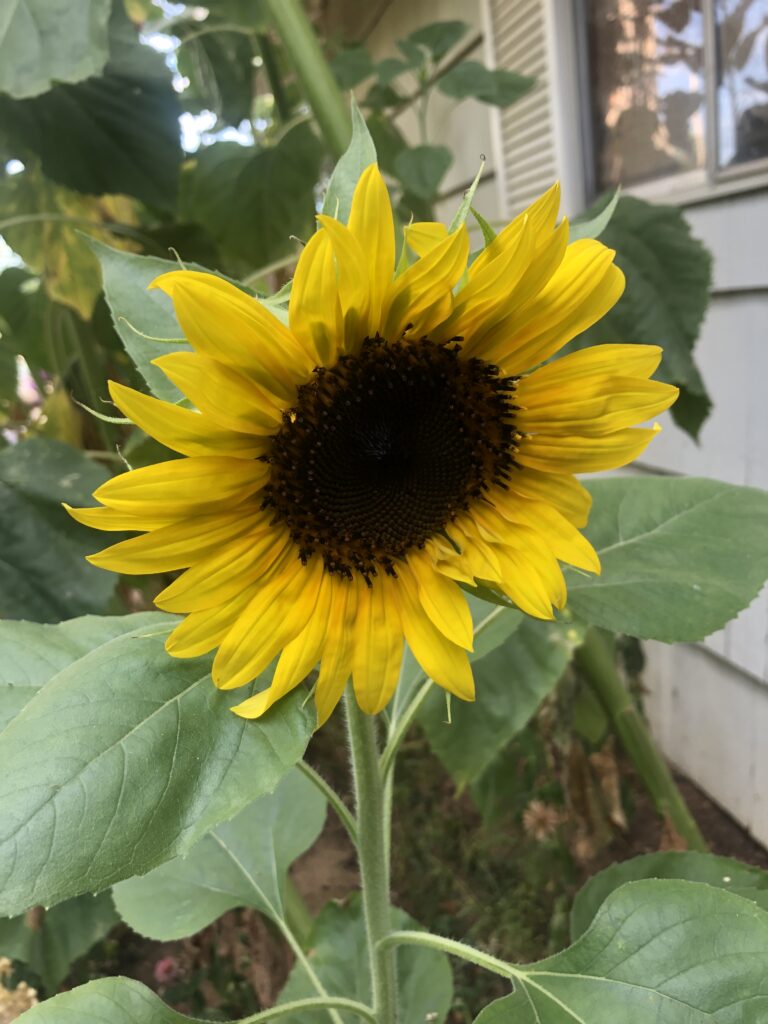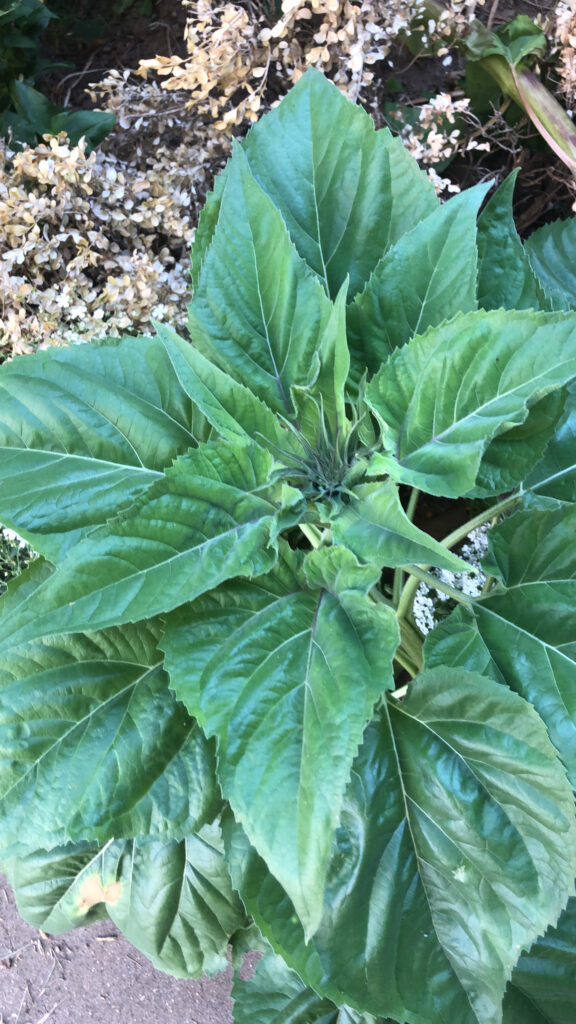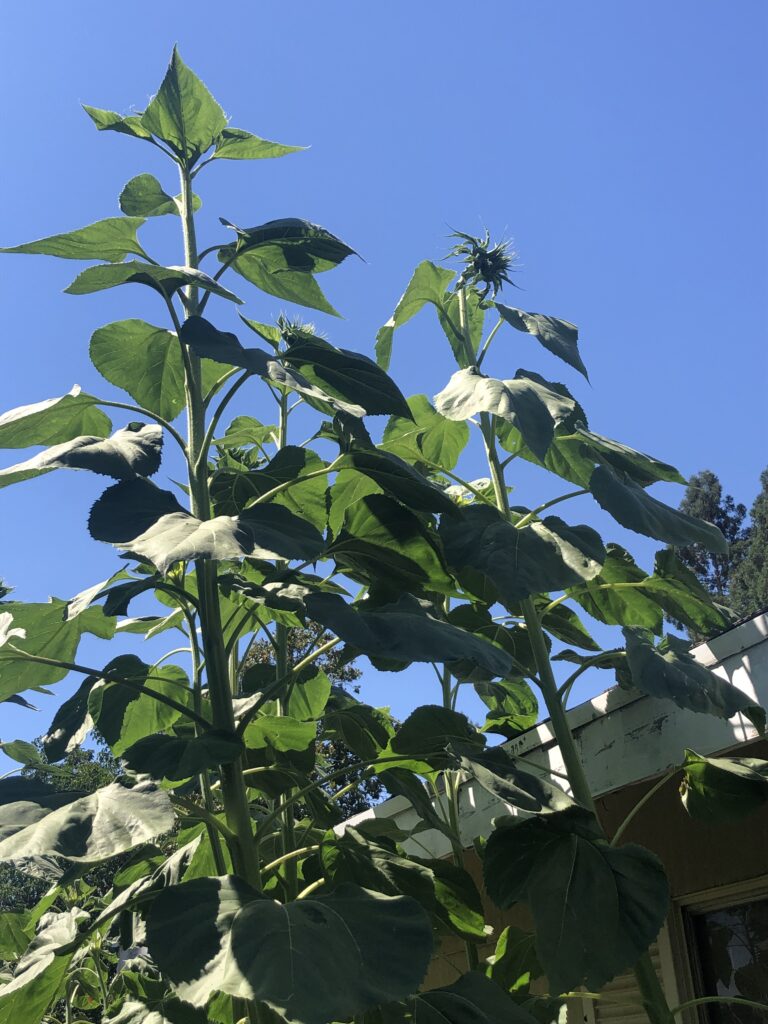Immediately recognizable to even young children, sunflowers hold a special place in many hearts. Few blossoms hold the power to brighten our spirits like the sunflower. With its radiant countenance and resplendent hues, the sunflower stands as a living testament to nature’s artistry. Whether adorning vast acres of fields or gracing household gardens, these beacons of positivity evoke smiles, joy, and wonder.

About Sunflowers
Cultivated by humans for at least the last 5,000 years, sunflowers are native to North America. They have woven themselves into the fabric of human history, art, and spirituality. Sunflowers are often considered a symbol of abundance in Native American traditions. Similarly, ancient Incas believed that the sunflower’s bright face symbolized the sun god and prosperity. Vincent van Gogh, the iconic Dutch artist, immortalized sunflowers in a series of paintings. Van Gogh’s use of vibrant colors and bold brushstrokes captured the essence of these blooms. His paintings of sunflowers are so well known they have become a recognizable symbol of his artistic expression and creativity. In Chinese culture, sunflowers symbolize long life, good luck, and vitality. Ukrainian folklore associates sunflowers with fertility and joy, with sunflower crowns adorning celebrations and rituals.
A sunflower (scientific name: Helianthus annuus) is a tall, flowering plant belonging to the Asteraceae family, also known as the aster, daisy, or sunflower family. Native to North America and well-known for its large, bright yellow, or orange-yellow flower heads, which resemble the sun. The name “sunflower” comes from the Greek words “helios” (sun) and “anthos” (flower). Interestingly, what appears to be a single flower on a sunflower is, in fact, a cluster of hundreds of individual florets. Their structure consists of ray florets resembling petals that surround a central cluster of tightly packed flowers. This arrangement creates the illusion of a single, large flower.
Sunflower Facts
Sunflowers are prolific seed producers, and their reproductive strategy involves both self-pollination and cross-pollination. The disk florets in the center of the flower contain both male and female reproductive parts, facilitating self-fertilization. However, the protruding stigmas, which brush against visiting pollinators encourages cross-pollination.
One of the most captivating botanical traits of sunflowers is heliotropism – the ability to track the movement of the sun. Young sunflowers exhibit this behavior by turning their flower heads to face the sun as it moves across the sky. Heliotropism is most pronounced during the early growth stages and enhances the plant’s photosynthesis.
The seeds, packed with valuable nutrients and oils, are most commonly harvested portion of the sunflower. As the disk florets transform into seeds, they accumulate energy-rich compounds like proteins and fatty acids. Sunflower seeds are not only a nutritious food source for humans but also play a vital role in supporting wildlife.
When not grown for seeds, sunflowers are sometimes grown for phytoremediation. That is, they absorb and accumulate heavy metals and toxins from the soil. This ability makes them useful for restoring contaminated areas and improving soil quality in polluted environments.
Growing Sunflowers
Growing sunflowers develop through several stages over a period of about 90-120 days for standard varieties, or 70-85 days for dwarf varieties.
Day 0 Sunflower Seed Sowing (Early Spring):
Begin by selecting a sunny spot in your garden or container with well-draining soil. Depending in the particular variety, sow the sunflower seeds directly into the soil to a depth of 1 to 2 inches. Water the soil gently after planting to ensure adequate moisture for germination.

Day 7-10 Sunflower Germination and Seedling Stage (Late Spring):
Within 7 to 10 days, you’ll witness the first signs of life as tiny green shoots emerge from the soil. As the seedlings grow, ensure they receive ample sunlight and water to foster healthy development. Protect young seedlings from pests and harsh weather conditions, if necessary.
Day 11-59 Sunflower Early Growth (Late Spring to Early Summer):
The seedlings will start developing their first set of true leaves, signaling their readiness for growth. As the stem elongates, you may notice the sunflower exhibiting its characteristic heliotropism – turning its leaves and bud to face the sun. Continue regular watering and consider applying a balanced fertilizer such as Super Nutrients to support healthy growth.


Day 60-90 Sunflower Maturation (Mid to Late Summer):
Around two to three months after germination, depending on variety, sunflowers will enter its blooming phase. The flower bud gradually matures, revealing tightly packed disk florets surrounded by ray florets. The outer ray florets begin to unfurl, creating the sunflower’s iconic “petal” effect.
Sunflower Full Bloom (Late Summer):
As the sunflower reaches its full bloom, its face will turn toward the sun, absorbing its warmth and energy. Pollinators, such as bees and butterflies, are drawn to the flower’s nectar-rich disk florets. The sunflower’s vibrant colors and intricate inflorescence will be on full display, creating a spectacle of nature’s artistry.

Sunflower Seed Formation (Late Summer to Early Fall):
After pollination, the disk florets begin to transform into seeds, which gradually fill the central disk. The once-vibrant ray florets may start to wither and fade, signaling the flower’s transition into seed production. As the seeds develop, the flower head may become heavier, causing it to tilt downward.
Harvesting Sunflower Seeds (Fall):
Once the majority of the flower head has turned brown (or at the least, the stem behind the head has turned yellow), and the seeds are mature, it is time for harvest. Cut the flower head from the stem, leaving a few inches of stem attached. Hang the flower heads upside down in a dry, well-ventilated area to allow the seeds to fully dry.
Seed Saving (Late Fall to Winter): Gently remove the seeds from the dried flower heads and store them in a cool, dry place. These saved seeds can be planted in subsequent growing seasons, ensuring the continuation of the sunflower’s life cycle.
Concluding Thoughts
With patience, care, water, and sunshine, you’ll witness the transformation of a small seed into a towering testament to nature’s beauty. Whether you’re a seasoned gardener or embarking on your first sunflower growing adventure, it is the journey and not just the end result that matters. The anticipation as the first green shoots emerge, the awe-inspiring moment when the flower first opens its petals to the sun, the eventual harvest, and the satisfaction of nurturing this lovely plant from seed to seed.





